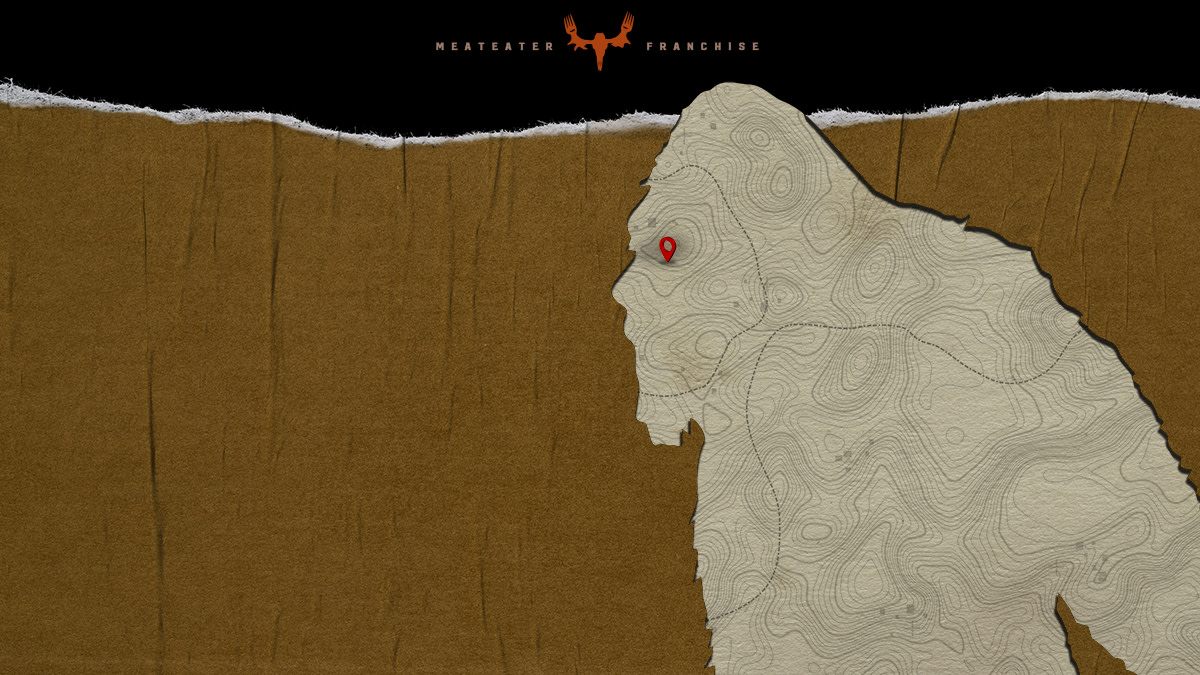
We don’t believe in Bigfoot at MeatEater, but we’re damn interested in him. To see if a crew of staunch skeptics could be swayed, we gathered the most respected Bigfoot authorities to answer our most pressing questions. This is part two of our eight-part series, Ask a Squatcher.
According to a Bloomberg CityLab report, Bigfoot sightings have decreased over the last decade. Encounters with Sasquatch surged from 2000 to 2009, but have taken a dip since. If this were true of whitetails in Texas or walleye in Minnesota, biologists would plainly tell you their populations are down. When it comes to Bigfoot, nothing is so simple though. We asked our group of experts for their take on this decline.
Dr. Jeffrey Meldrum, Idaho State University
Dr. Jeffrey Meldrum is a professor of Anatomy and Anthropology. His lab in Pocatello, Idaho, houses over 300 footprint casts from a mysterious North American primate. He is the author of “Sasquatch: Legend Meets Science,” which explores the scientific evidence for Bigfoot.
“Credible reports, like documented footprints and visual encounters, remain relatively rare. The Internet and social media have promoted the sharing of experiences, while also planting expectations and interpretations in suggestible minds. There seems to be a proliferation of bumps in the night, indeterminate spoor, and other ambiguous sign too readily attributed to Sasquatch.
“On the other hand, as the stigma associated with Bigfoot is dispelled, I find more credible, professional, and experienced witnesses are willing to discuss their encounters. These include park rangers, wildlife biologists, veterinarians, photographers, and hunters. Numbers can be misleading, as it is impossible to collect systematic data on such a serendipitous experience. And in spite of population growth and development, fewer people are venturing into the backcountry now compared to half a century ago.”
Ronny Le Blanc, Expedition Bigfoot
Ronny Le Blanc hosts the show Expedition Bigfoot on the Travel Channel. His team claims to have Bigfoot evidence that includes hair samples, infra-sound vocalizations, footprints, nests, and thermal imagery. He is the author of “Monsterland,” a deep dive on the Bigfoot phenomenon.
“There has been a downward trend in sightings since 2009, but I think we are going to see it swing in another direction. Bigfoot sightings, in my opinion, will see a surge this year due to COVID. I see more people hiking, running, or just being out in nature than ever before. More and more individuals are getting interested in hunting and fishing, too. With incredible video technology at our fingertips, we will have the ability to capture more evidence.
“I firmly believe there are going to be more sightings or findings of evidence in forests across the country this year. There are an enormous amount of unreported encounters due to ridicule and fear. Some researchers believe that this unreported number of encounters could be as much as five to 10 times the reported number.”
Jeremiah Byron, Bigfoot Society Podcast
Jeremiah Byron is the host of the Bigfoot Society Podcast. His weekly show provides a platform for the people who make it their life’s work to prove that Bigfoot exists.
“The Bigfoot population is not dying out, but there are less sightings because we as a culture are not going out in the woods anymore. It’s as simple as that. Bigfoot is not going to show up in your Instagram DMs. You’ll only see him while out exploring local state forests or national parks. When’s the last time we took the time to do that? It’s probably been a while since Bigfoot has seen a human, either.”
Matt Moneymaker, Bigfoot Field Researchers Organization
Matt Moneymaker is the founder of the Bigfoot Field Researchers Organization. His group has the most comprehensive sightings database in the world, with nearly 5,000 encounters reported in the last 25 years. He is also a host of Finding Bigfoot on Animal Planet.
“Sightings have not decreased in recent years—they just don’t get reported in mainstream news as much anymore. Nowadays sightings are reported almost exclusively on the Internet. I have the data to prove it as the founder of the Bigfoot Field Researchers Organization. The BFRO receives 95% of reports online and receives as many reports as it did in the 1990s.
“A belief that sightings don’t occur as often anymore is purely a product of what you’re hearing, or not hearing, in the mainstream media. The same can be said for UFOs. UFOs are seen just as often as before, but they don’t get reported in the media unless there’s video to show.”
Feature graphic via Hunter Spencer.




Conversation